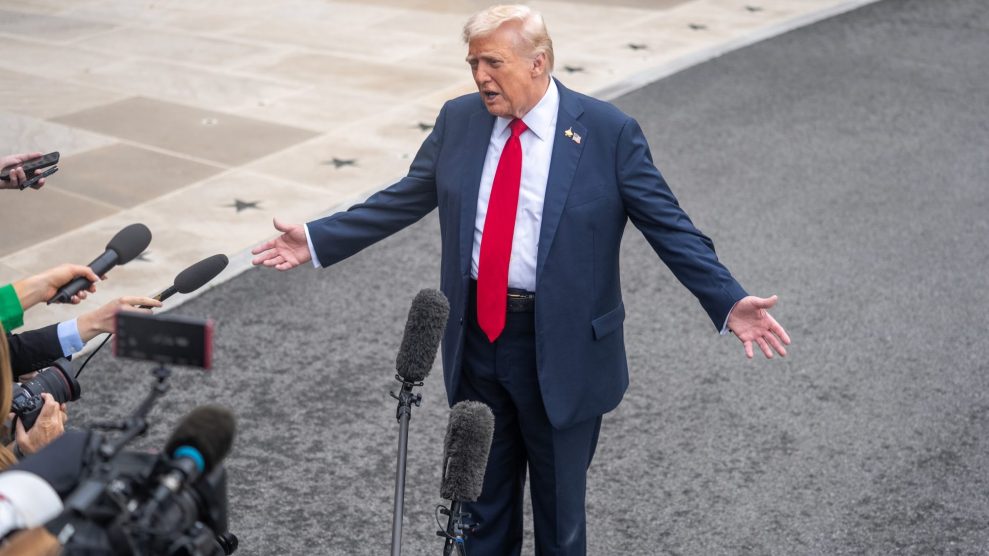Despite the fact that President-elect Obama described his stimulus package on Thursday with only broad generalities, the proposal is already coming under criticism from economists on the left. Anxiety that the package is too small is combined with a fear that the rumored $300 billion in tax cuts for individuals and corporations will do little to jump-start the economy. They argue that Obama, in seeking a solution that Republicans on the Hill will support, has sacrificed key components that would make the package work most effectively.
Paul Krugman, Nobel Laureate and in-house economic lefty for the New York Times, wrote on his blog this week:
This really does look like a plan that falls well short of what advocates of strong stimulus were hoping for — and it seems as if that was done in order to win Republican votes. Yet even if the plan gets the hoped-for 80 votes in the Senate, which seems doubtful, responsibility for the plan’s perceived failure, if it’s spun that way, will be placed on Democrats.
I see the following scenario: a weak stimulus plan, perhaps even weaker than what we’re talking about now, is crafted to win those extra GOP votes. The plan limits the rise in unemployment, but things are still pretty bad, with the rate peaking at something like 9 percent and coming down only slowly. And then Mitch McConnell says “See, government spending doesn’t work.”
Dean Baker, co-director of the Center for Economic and Policy Research, appeared on Rachel Maddow’s MSNBC show on Tuesday and said that investments in America’s infrastructure, which will create jobs, are preferable to tax cuts. The numbers, Baker said, are on his side.
Well, this isn’t a matter of ideology. There’s a lot of evidence on this. People save tax cuts, particularly given the current environment. People just lost all of their savings in the stock market and their house. They have to rebuild their savings.
If we send people a check, they are likely to save much of it. That’s good for them but it’s bad for the economy. We need spending right now, and we now hope the government spends it in weatherizing homes, redoing infrastructure, whatever it might be, that gives a direct boost to the economy.
John Judis, writing in the New Republic, expanded on infrastructure investment’s various benefits:
Most economists agree that what finally pulled the U.S. out of the Great Depression was military spending for World War II…. In 1936, unemployment was still at 16.9 percent; by 1942, after two years of war spending, it was 4.7 percent, strongly indicating that it was war spending that did it. I am not suggesting that the United States start a world war in order to solve the world’s economic problem. But I am suggesting a strategy that could be called the fiscal equivalent of war.
It would consist not merely of updating or repairing the nation’s infrastructure, but in undertaking massive new investments that would expand the scope of American industry, and address other urgent problems in the process: global warming, over-reliance on petroleum, and the need to revive America’s domestic manufacturing capabilities—not just to provide jobs, but also to provide tradeable goods that can reduce the country’s current account deficit.
James Galbraith, an economist at the Lyndon B. Johnson School of Public Affairs, who recently wrote for this magazine that Obama needs to think long-term for his stimulus package to be truly effective, recently urged massive action, drawing inspiration from Ronald Reagan:
Reagan got it right: he put everything into the first package in 1981, passed a tax cut that was grossly excessive, and then let the Congress pass tax increases taking it back in 1982 and 1984. The result, on net, was a cyclical success. A strategy that calibrates the package to a forecast which proves too optimistic will
lead to failure.
For this reason, I have favored a package that is at least twice, and even three times, the two-percent-of-GDP we are hearing about now. There is no harm in doing too much; you can take it back if the economy recovers. There is every potential for harm in doing too little.
Greg Anrig of the Century Foundation puts it all together, arguing that Obama’s drive for bipartisan support is a misuse of presidential leadership:
The big corporate tax break proposals they have floated are misguided from a policy standpoint and concede too much ground politically. And even hinting at the possibility of cutting Social Security benefits, when we are clearly in a much deeper economic crisis than most voters understood even in November, is a further sign that Obama is focusing on trying to win broad support for a package that will be less likely to be effective than sufficient support for a package that will be more likely to be effective.
Now that he’s actually going to be president, getting policies right and
then winning support for those strategies should be the order of operations rather than the other way around. The foremost priority has to be assembling ideas that will actually work.
Obama’s first initiative as president will likely be one of the most important of his four or eight years in office, and is one that he must undertake with no presidential experience and little time to build working relationships with his economic advisers or Members of Congress. How he approaches this raises a critical issue: does his instinct for bipartisanship conflict not just with his progressive principles, but with the best interests of the country?
Photo by flickr user target=”new”Obama-Biden Transition Project used under a Creative Commons license.
















